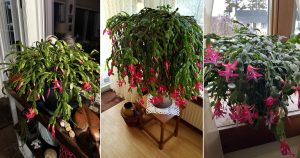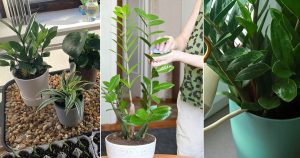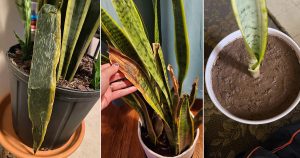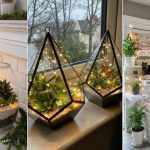Are you seeking the plant collections that stand out with bright colors? Fill your space with our charming Succulents With Pink Tips!
If you’re a working professional and can’t dedicate a lot of time to gardening, though you love plants, succulents can be the perfect choice for you. This is because they are quite low-maintenance and also come in a variety of colors, including pink! Read this article to learn about the 30+ best succulents with pink tips.
30+ Succulents With Pink Tips
1. Afterglow
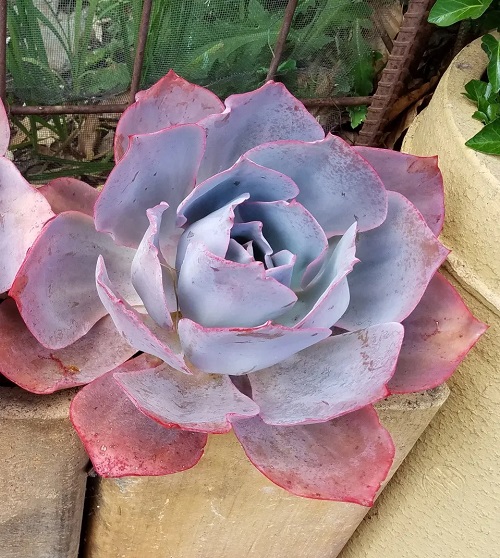
Botanical Name: Echeveria ‘Afterglow’
Echeveria ‘Afterglow’ showcases a light blue color in the center and features a beautiful pink color towards the tips. Though this plant may grow bigger and orange flowers, they tend to stay a powdery pink color, which also depends on the temperature and climate.
2. Aurora

Botanical Name: Sedum rubrotinctum
Also called the Jelly Bean succulent with tips ranging from green to pink, this is a unique succulent, not just because of its color but also of the amount of ground it can cover. Aurora plants can grow up to 5-18 cm.
3. Calico Kitten
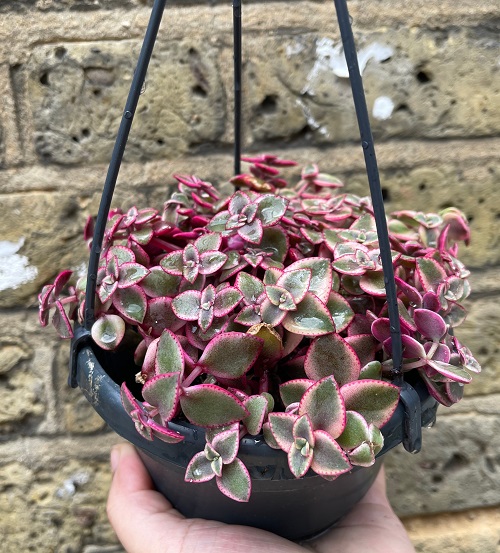
Botanical Name: Crassula pellucida
Calico Kitten are lovely and simple succulents as they have charming heart-shaped leaves in pink, white, and green colors. They grow upwards or outwards, giving a stacked look to their leaves. Unlike other crassula plants like Jade, Calico Kitten has delicate leaves on trailing stems.
4. Bluebean Succulent
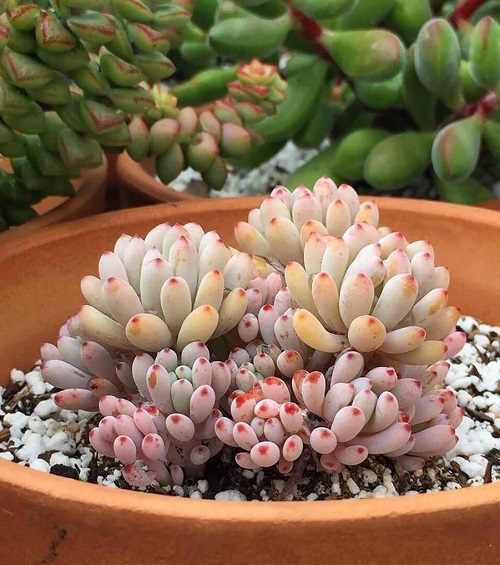
Botanical Name: Graptopetalum pachyphyllum
Contrary to its name, the blue-fluid-filled leaves of this succulent showcase a pinkish hue on the tips. This succulent grows very close to the ground, and its stems produce branches that extend upward. Moreover, Bluebean plants are also very low-maintenance.
5. Euphorbia Monadenium
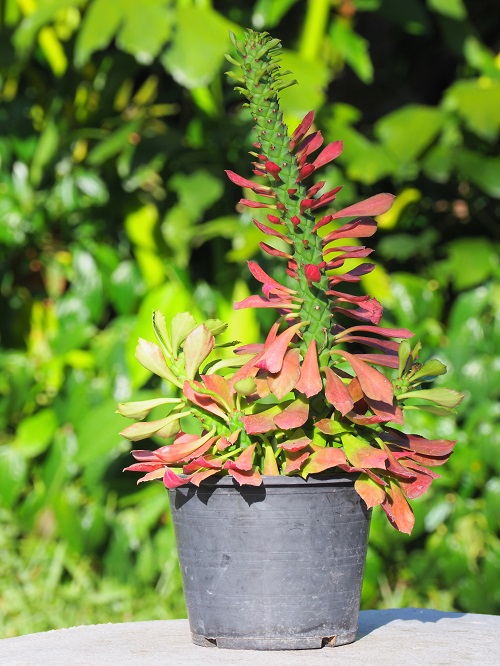
Botanical Name: Euphorbia monadenium stapelioides
This low-maintenance succulent is very popular for its gorgeous rosy pink leaves that grow from the thick, spiky green spires protruding from the base. The leaves begin with a green color and then get a gradient of red and pink going outward.
6. Douglas Huth
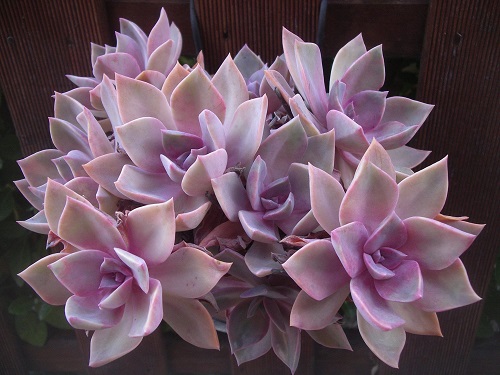
Botanical Name: Graptoveria ‘Douglas Huth’
If you are looking for a succulent which has some distinct features, especially in appearance, the Douglas Huth is the one for you. Douglas Huth succulents have dozens of pink, triangle-shaped rosettes on a single stem which form clumps and sprawl outwards.
7. Kalanchoe Pink Butterflies
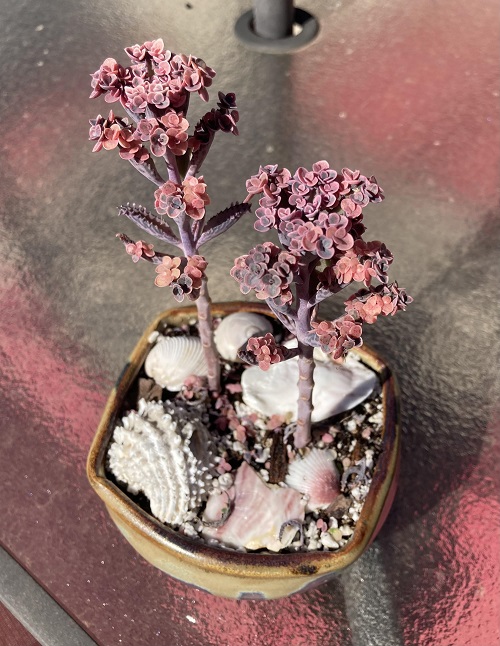
Botanical Name: Kalanchoe x houghtonii
This colorful succulent is called ‘Pink Butterflies’ because of the light pink plantlets that sprout along the edges of its leaves. Although it’s said to be monocarpic, meaning it flowers only once, it may take several years before blooming. Keep an eye out for the pink flowers in the fall when they finally appear.
8. Ghost Plant
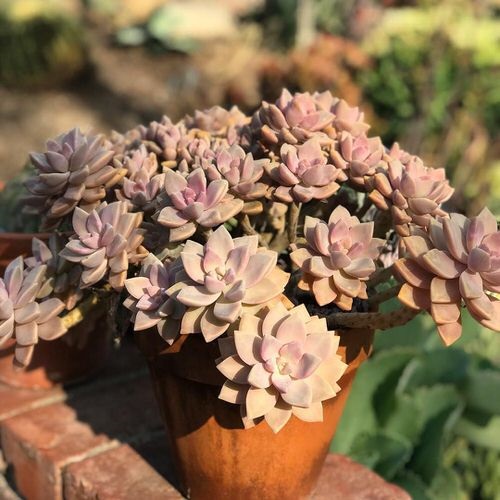
Botanical Name: Graptopetalum paraguayense
This succulent has a slight rosy hue in the leaves, but this can be easy to miss when you are scanning the garden. Generally, the leaves of the Ghost plant start out green but as it matures, they start to develop a light pink color on their surface, depending on climate.
9. Neon Breaker
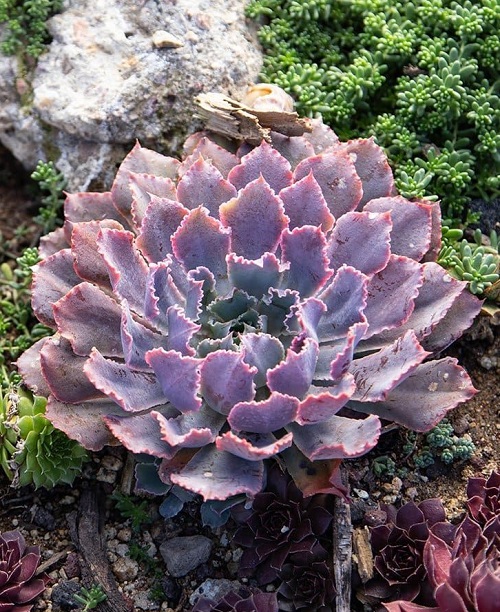
Botanical Name: Echeveria ‘Neon Breaker’
Though similar to the other Echeveria succulents in many ways, the distinctive feature about the Neon Breaker is that it has an eye-catching colors that other succulents do not have, such as a lighter, dusty center which ultimately lends it the pinkish hue.
10. Peacock Echeveria
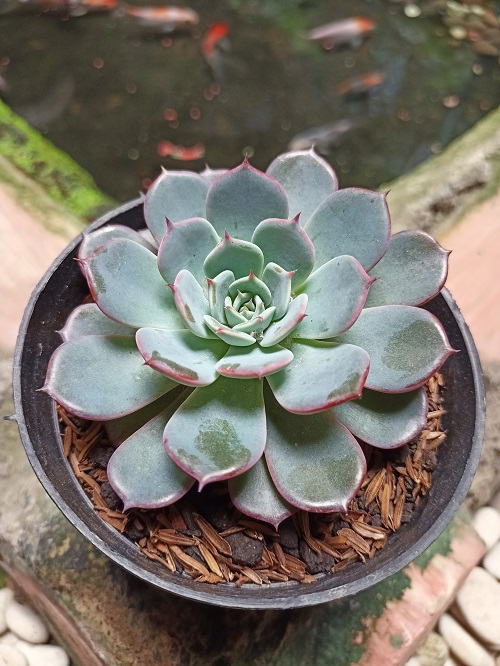
Botanical Name: Echeveria peacockii
Yet another species in the Echeveria family, this plant is not completely pink. Similar to a peacock’s feather, this plant shows many colors. It has rosettes, which feature a reddish and pinkish tone. As the plant grows and matures, their colors become more prominent.
11. Pink Aeonium
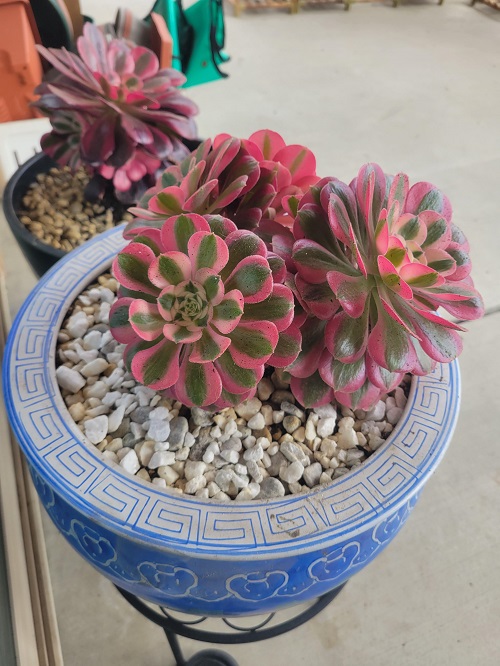
Botanical Name: Aeonium leucoblepharum
A cute succulent that features a color scheme similar to a watermelon cut through the middle, the leaves of this plant are pink with a single green stripe going right down the center. This stripe is lacking in younger plants, which are also not so striking in color.
12. Pink Beauty
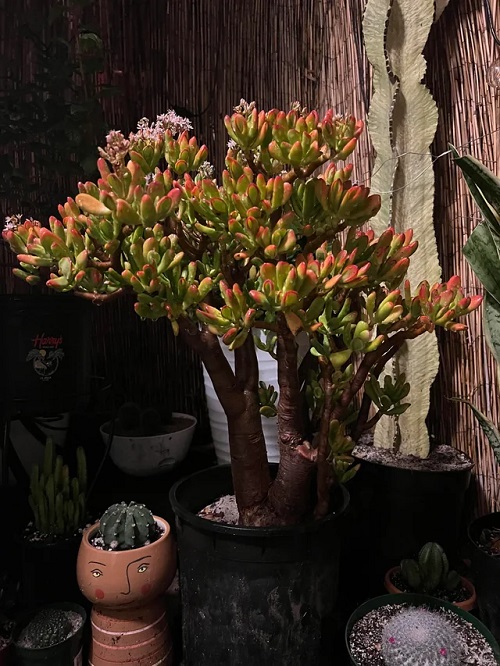
Botanical Name: Tomentosum ‘Pink Beauty’
A variety of the Jade plant, the Pink Beauty showcases several branches and very thick stems, which are velvety green. Its leaves grow from the 9 inch base of this plant and can grow up to 5 feet tall, showcasing a red or pink color.
13. Pink Champagne
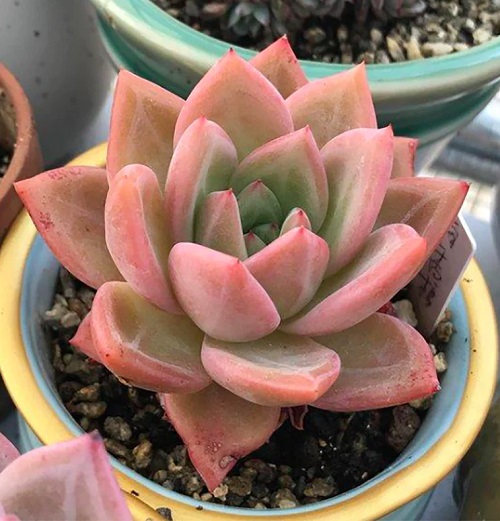
Botanical Name: Epimedium ‘Pink Champagne’
True to its name, the Pink Champagne has a more rosy color than most other succulents. Similar to Echeveria succulents, the Pink Champagne also has triangle-shaped rosettes that extend upward and outward. With a green center, the surrounding leaves showcase a dusty, pale pink.
14. Pink Frills
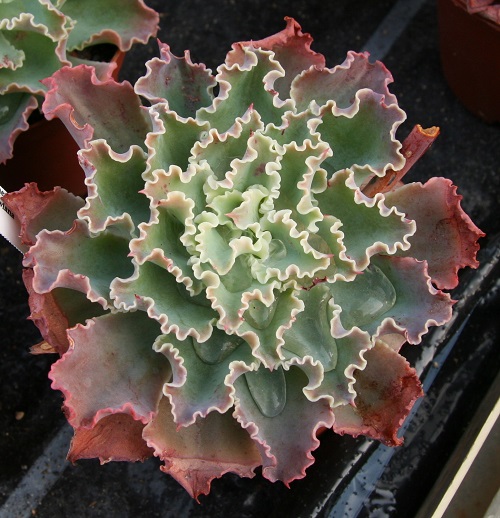
Botanical Name: Echeveria shaviana
This rose-like beauty can make for a beautiful look as it features a deep purple color complete these succulents with pink tips. They can be great for your coffee table, indoor garden, or centerpiece till they mature and grow larger and this is the time when they need repotting.
15. Pink Granite
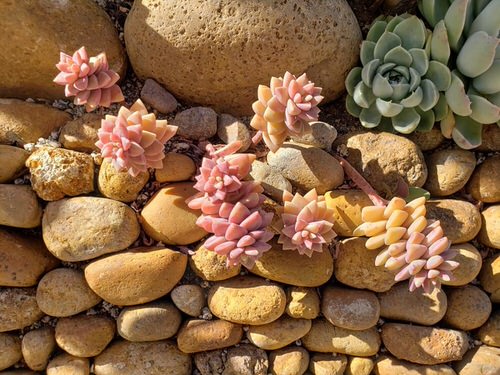
Botanical Name: Sedeveria ‘Pink Granite’
Growing in upward spires, the Pink Granite succulent has fluid-filled triangle-shaped leaves and a pale pink color. Younger Pink Granite plants have a light green center in the leaves. When this plant gets too tall, it tends to lay on its side.
16. Rainbow
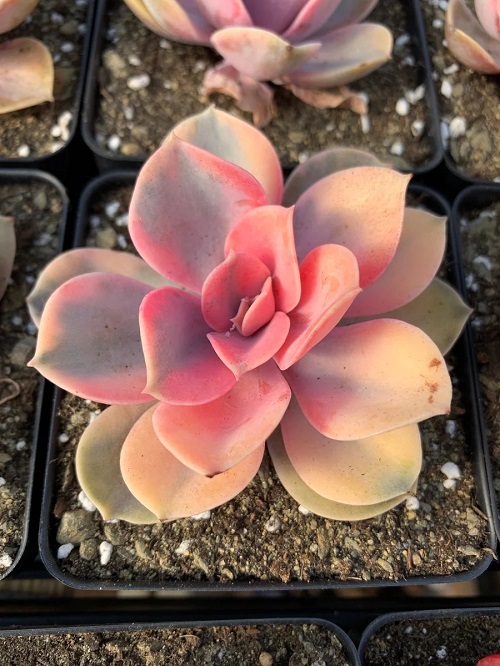
Botanical Name: Echeveria ‘Rainbow’
Though not as colorful as a rainbow, the Echeveria Rainbow succulent features a large selection of colors. Similar to other succulents, this one too has triangle-shaped leaves and a gradient of dark green, pale pink, and rose pink colors throughout the leaves.
17. Raindrops Succulent
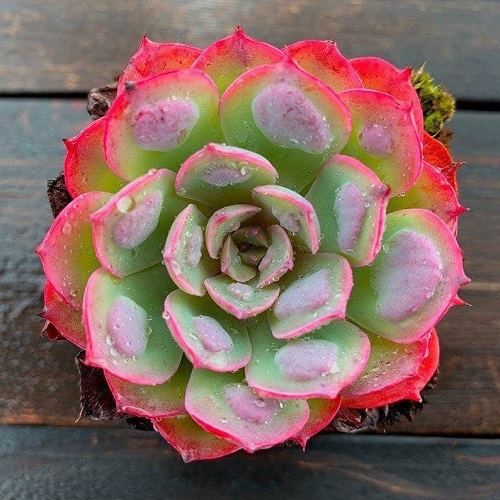
Botanical Name: Echeveria ‘Raindrops’
This succulent has the perfect pink-tipped leaves along with small bumps at the end of each pink-tipped leaf. It has a wide rosette that grows upward and outward. Ideal for the indoors, this succulent thrives in less sun and doesn’t need much water.
18. String of Hearts
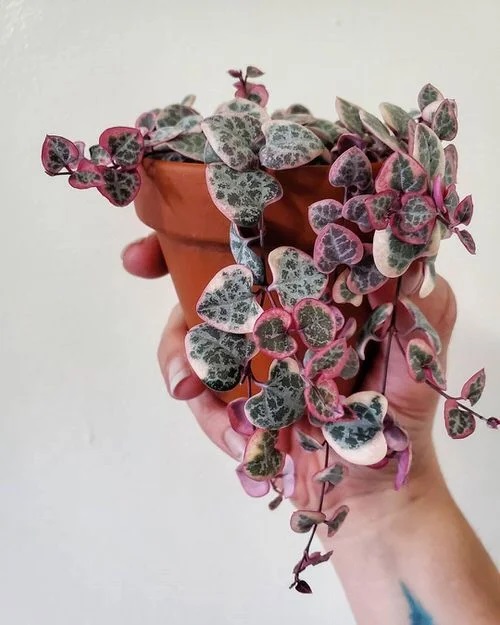
Botanical Name: Ceropegia woodii
Particularly popular for being vining in nature, this succulent’s leaves grow off its vine-like stems and take the shape of tiny hearts. Both the leaves and stems of this plant are filled with fluid and water, so they are easy-maintenance.
19. Taurus
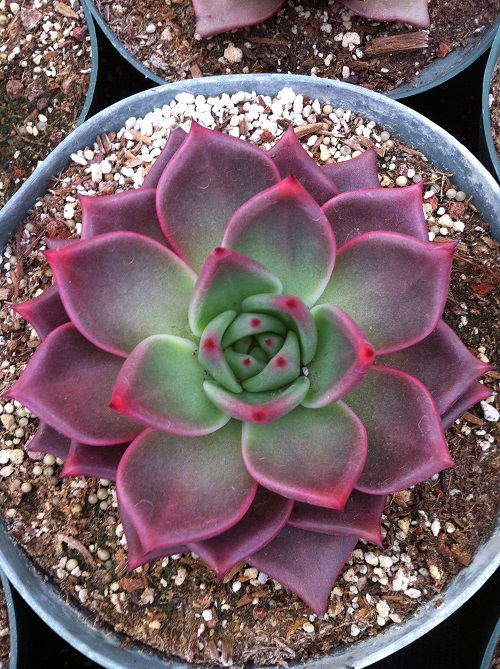
Botanical Name: Echeveria ‘Taurus’
While this plant is immature or young, it shows green sprouting leaves in the center. However, as soon as the leaves in this succulent start maturing, they will completely lose the green color and take on a royal purple or pink brilliance.
20. Tippy
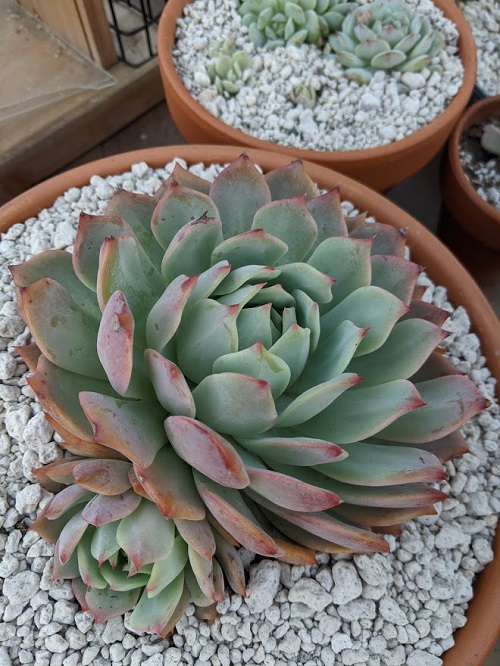
Botanical Name: Echeveria ‘Tippy’
Yet another Echeveria variety with leaves filled with fluid, this succulent, too, has leaves tipped with a reddish-pink hue. This succulent is especially named “Tippy” because of its pink-tipped leaves over a neutral color scheme in the rest of the plant.
21. Turtle Vine
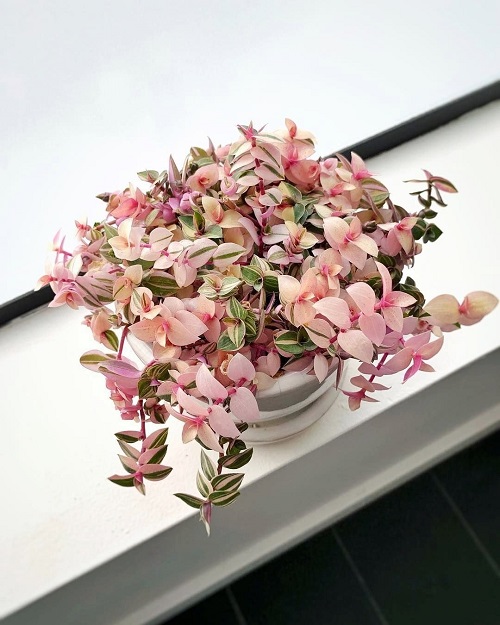
Botanical Name: Callisia repens
Turtle Vine succulents are slightly different and more unique than your regular ones as they offer ground cover. Thanks to their spilling nature and pale pink color in their leaves, besides flowers in summer.
22. Variegata
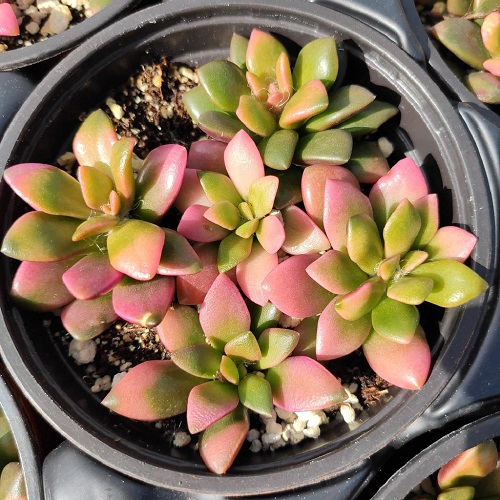
Botanical Name: Anacampseros telephiastrum
The Variegata succulent has thick wedges instead of traditional leaves. They have a fur-like surface complete with prickly hairs. This succulent comes in multiple color options, but the most popular one is the reddish, pink plant that has a mixture of green.
23. Variegated Indian Corn Cob
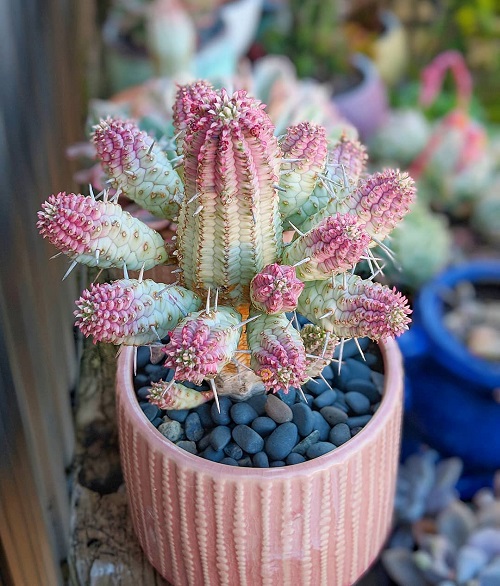
Botanical Name: Euphorbia mammillaris variegata
Succulents can be regarded as the cousins of cacti, and the Variegated Indian Corn Cob shows similarities to the cactus. These succulents with pink tips on each corn and the plant takes the shape of a cactus. It also has a dusty or chalky surface that is spiky and ribbed.
24. Bashful
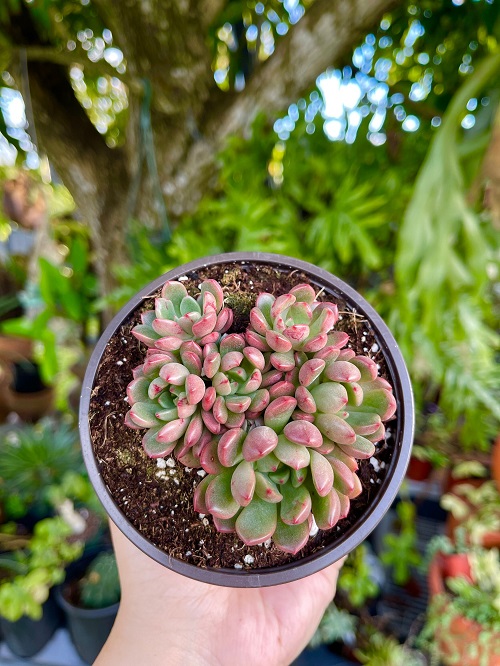
Botanical Name: Graptoveria ‘bashful’
A hybrid plant of Echeveria varieties, this succulent has fleshy, upright leaves. The Bashful has one mint-green rosette, which is coupled with succulent leaves adorned with pink pointed tips. It also produces flowers in the spring.
25. Graptoveria ‘Debbie’
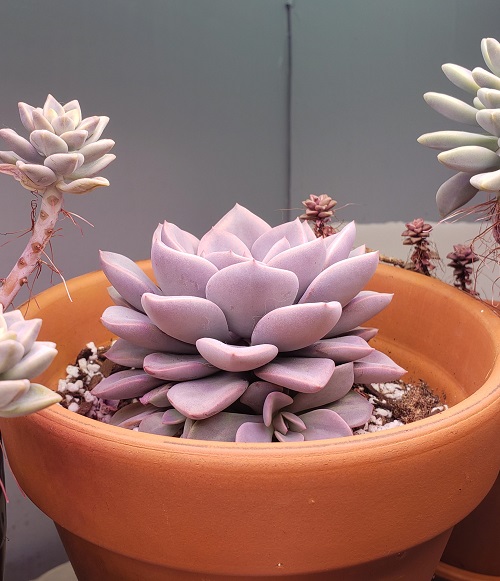
Botanical Name: Graptoveria ‘debbie’
Similar to the Bashful, the Debbie is an Echeveria hybrid, which also has a rosette. The Debbie rosette is a lovely shape and shows off pink hues. If you see the blueish-purple leaves turning pink, it could be a sign that the plant is stressed.
26. Copper Rose
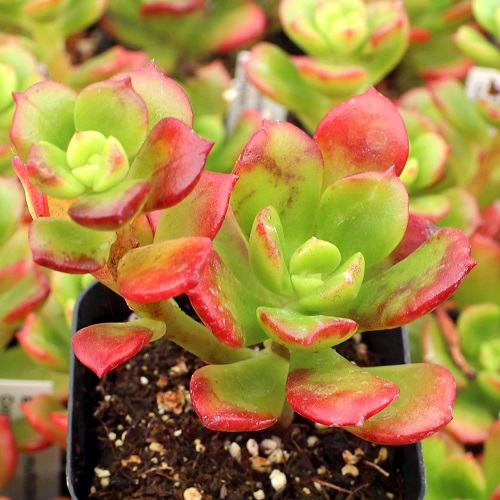
Botanical Name: Echeveria multicaulis ‘Rose’
This succulent, with multiple branches and naked stems, has a rosette with shiny and fleshy dark green leaves that also feature reddish or pinkish tips. This coloration becomes brighter with sunlight. The stems grow from the base and reach up to 1 foot long.
27. ‘Francesco Baldi’
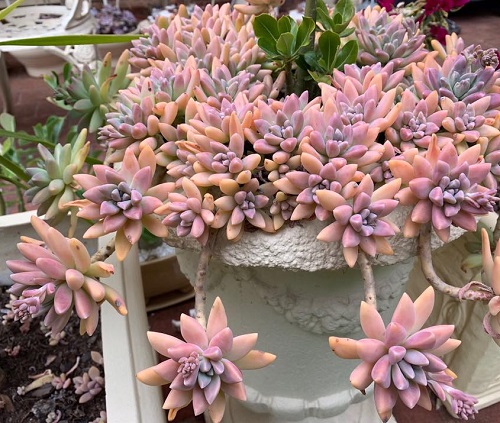
Botanical Name: Graptosedum francesco baldi
This hairless plant grows to about 12.5 cm or 5 inches in diameter. If you grow this plant in partial shade, you will see the color being bluish-grey. However, keeping this plant will allow the plan to be pinkish-gray. The flowers of this plant are yellow.
28. String of Buttons
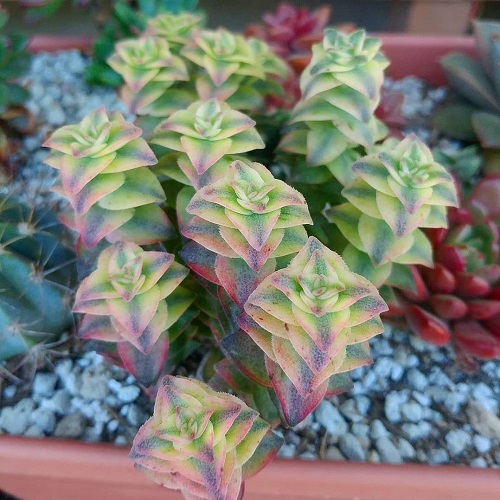
Botanical Name: Crassula Perforata
The best way that you can show off the reddish-pink edges of the plant’s leaves alongside their natural apple-green color is to keep them in a sunny spot. This is because the coloration will get richer as it gets more sunlight.
29. Aloe Pink Blush
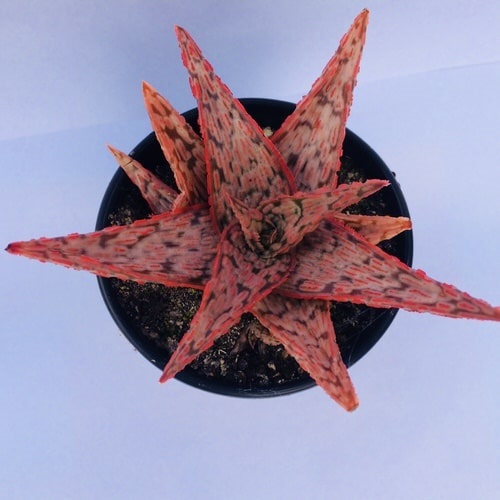
Botanical Name: Aloe rauhii
This small clumping succulent has both deep-green and light-green leaves, all of which are textured and have pink ridges. The flower stalk has a short inflorescence displaying orangish-pink flowers.
30. Pink Witch Aeonium
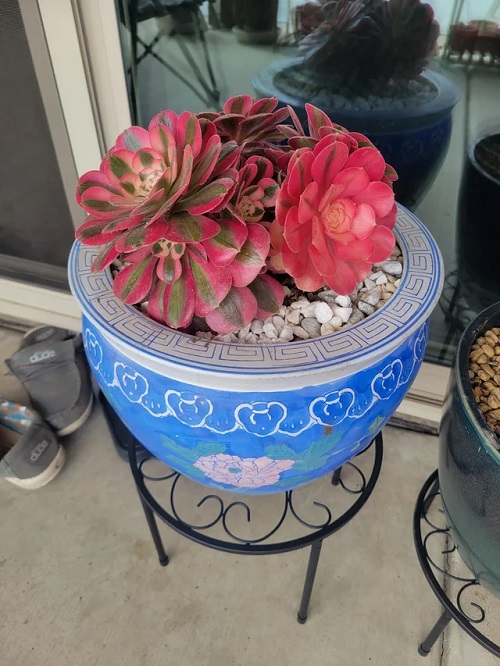
Botanical Name: Aeonium ‘Pink Witch’
A variegation of Aeonium “Blushing Appeal,” the Aeonium Pink Witch showcases a pink color whose strength changes based on seasons and light levels, such as intense pink in summers to chalky pink and rose pink leaf tips during winters.
31. Kalanchoe Fedtschenkoi
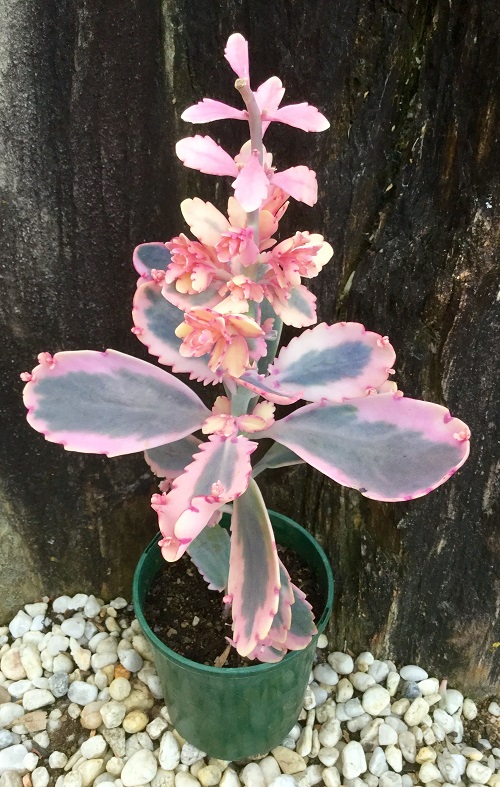
Botanical Name: Kalanchoe fedtschenkoi
Popularly known as the “lavender scallops”, this seasonal succulent grows quite close to the ground and has compact foliage alongside pink flowers. The best part about this succulent is that it has a pink hue, which would be great for your plant collection.


